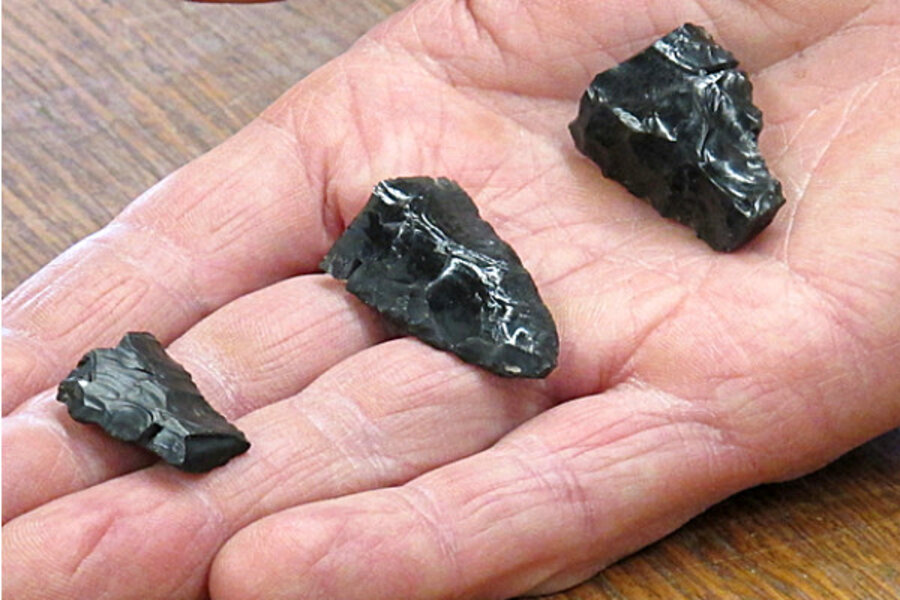Oregon cave discovery suggests lost ancient American culture
Loading...
Ancient stone projectile points discovered in a Central Oregon cave complex have cast new light on the identity of the first Americans.
While scientists agree they crossed the Bering Strait during an ice age, no one knows the identity of the first people to spread across the North American continent.
For some time, these first Americans were believed to have belong to a single group, called the Clovis culture, named for the New Mexican site where their distinctive, 13,000-year-old projectile points were first found.
However, some have questioned this theory, and these newly discovered projectile points, the sort of stone tips added to spears, appear to add weight to these questions.
These stone points, a type known as Western Stemmed points, are narrower and lack the distinctive flute, or shallow groove, found on Clovis points. Researchers believe the two types of points represent different technologies, produced by different cultures.
"This brings into focus the concept that other people or perhaps even multiple waves of people bringing other technologies were certainly involved in the first colonization [of the Americas]," said researcher Dennis Jenkins, an archaeologist at the University of Oregon, in a podcast issued by the journal Science, where the work is published. [How Fighting Evolved: 10 Weapons That Changed Combat]
Dating these Western stemmed points accurately was key, since others like them have been found elsewhere; they are common on the U.S. West Coast and in the Great Basin of Nevada, Utah, Idaho, Oregon and California.
These are generally believed to be younger than Clovis points. However, researchers have had difficulty finding materials that can be reliably dated at the Western Stemmed point sites, Jenkins said during a press conference yesterday (July 11).
Archaeologists often look at the decay of radioactive carbon atoms within organic material to determine its age. In Oregon's Paisley Caves, where the four new Western stemmed points showed up, the researchers found some of the ancient organic material they needed, most notably, in coprolites, or dried feces, carrying human DNA.
The coprolites appeared to have been left behind at about the same time as the nearby projectile points.
Radiocarbon dating put the coprolites and other organic samples located near the points at more than 13,000 years old. The team examined the sedimentary layers and the artifacts to determine if the sediment, and as a result the timeline preserved as new layers are laid down, had been disrupted or if the samples had been contaminated.
As a result, they determined that the projectile points — which were broken and appear to have been cast aside as garbage — were as old or older than Clovis points found elsewhere.
"The radiocarbon dates we got have answered the question, are Western stemmed points as old as Clovis. It's been debated since the 1970s, and we have established that fact beyond question," Jenkins said in the podcast. "It certainly reinforces or substantiates, if you will, the concept that there were multiple cultural influences here during the Pleistocene [when the Americas were first colonized]."
The research is detailed in Friday's (July 13) issue of the journal Science.
Follow Wynne Parry on Twitter @Wynne_Parry orLiveScience @livescience. We're also on Facebook & Google+.
Copyright 2012 LiveScience, a TechMediaNetwork company. All rights reserved. This material may not be published, broadcast, rewritten or redistributed.







